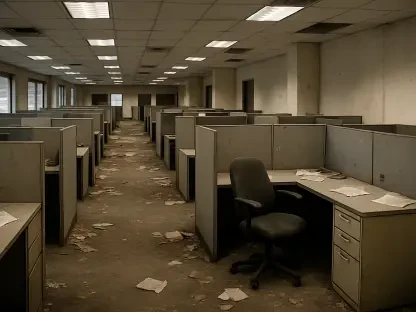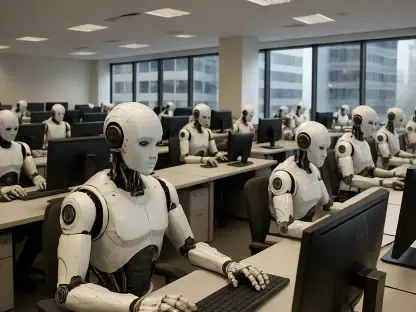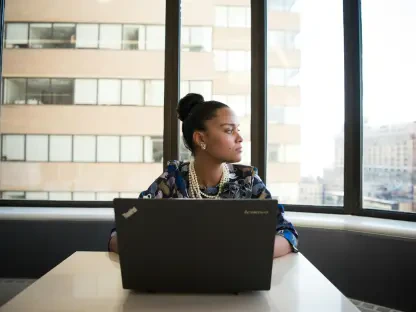I’m thrilled to sit down with Sofia Khaira, a renowned specialist in diversity, equity, and inclusion, who has dedicated her career to transforming workplace cultures. With a deep focus on talent management and development, Sofia has been instrumental in driving initiatives that create inclusive and equitable environments for employees of all backgrounds and ages. Today, we’re diving into the critical topic of ageism in the workplace, exploring its subtle manifestations, the unique challenges it poses, and how HR can lead the charge in fostering age diversity. Our conversation touches on the pervasive nature of age bias, its impact on recruitment and career progression, and actionable strategies for building a culture that values every generation.
Can you paint a picture of what ageism looks like in today’s workplace, especially in everyday interactions or hiring processes?
Ageism in the workplace often hides in plain sight. It can show up as subtle comments, like joking about someone being “over the hill” or assuming an older employee isn’t tech-savvy. In hiring, I’ve seen older candidates overlooked because of phrases in job postings like “high energy” or “fresh ideas,” which can unintentionally signal a preference for youth. Day-to-day, it might be excluding older workers from training opportunities because there’s an assumption they’re not interested in growth or are close to retirement. These actions aren’t always malicious, but they reinforce harmful stereotypes and create barriers.
How do you see ageism stacking up against other forms of discrimination, such as racism or sexism, in terms of social acceptance or scrutiny?
Ageism often flies under the radar compared to racism or sexism. There’s a cultural tendency to view age-related comments as harmless or even humorous, which you wouldn’t see with race or gender. I’ve noticed people feel more comfortable making offhand remarks about someone’s age—like calling them “old school”—without realizing the impact. This acceptance stems from deeply ingrained societal norms that tie worth to youth, and it’s why ageism is sometimes described as the most normalized form of bias. It’s less likely to be challenged, which makes it harder to address.
What are some of the biggest hurdles older workers face when it comes to landing jobs or advancing in their careers?
Older workers often face a stacked deck. Many report being passed over for roles or promotions because employers assume they’re less adaptable or not worth investing in long-term. I’ve come across cases where highly qualified candidates in their 50s or 60s are dismissed due to outdated stereotypes, like not being tech-proficient, even when their experience speaks volumes. This bias limits their access to opportunities and can trap them in insecure or stagnant roles, making it tougher to bounce back after redundancy compared to younger peers.
In what ways does ageism sneak into the recruitment process, particularly through how job postings are written or presented?
Recruitment is a key area where ageism creeps in, often through language that’s coded to appeal to younger candidates. Terms like “recent graduate” or “young, dynamic team” can discourage older applicants from even throwing their hat in the ring. I’ve seen job descriptions emphasize traits associated with youth, like “high energy,” which can alienate experienced workers who bring stability and insight. It’s not always intentional, but it sends a clear message about who the company values, and it starts the exclusion process right at the application stage.
How does ageism impact HR professionals themselves, especially when they’re seeking roles or promotions within their field?
Ageism hits HR professionals hard, ironically in a field that champions inclusion. I’ve known seasoned HR leaders who feel sidelined for senior roles because companies assume younger candidates bring more innovation or tech know-how. There’s a perception that if you’ve got decades of experience, you’re not looking to grow, which is nonsense. Many of these experienced folks end up in consulting or fractional work not by choice, but because they struggle to find roles matching their expertise and salary expectations. It’s a loss for the profession when wisdom gets overlooked for novelty.
What role does unconscious bias play in keeping ageism alive in workplace settings, and how does it manifest?
Unconscious bias is a huge driver of ageism because it shapes decisions without people even realizing it. It shows up in small ways, like assuming an older worker won’t want to learn new skills or using language like “culture fit” to justify hiring someone younger. These biases are rooted in societal stereotypes that equate age with decline, and they’re often so subtle that they go unchallenged. For instance, a manager might not offer a project to an older employee, thinking they’re less capable, without any evidence. It’s these automatic assumptions that perpetuate exclusion.
What practical steps can HR take to build a workplace culture that truly embraces and values employees across all age groups?
HR has to lead by example in creating an age-inclusive culture. First, integrate age diversity into all diversity and inclusion training, ensuring it’s treated with the same seriousness as race or gender. Programs like intergenerational mentoring can break down barriers and foster collaboration. Reviewing policies for hidden biases—such as rigid retirement expectations or training access—is critical. Leadership must also model inclusive behavior, openly valuing contributions from all ages. Finally, setting up mechanisms for reporting ageism, with clear investigation processes, ensures issues aren’t swept under the rug.
Looking ahead, what is your forecast for the future of age inclusion in the workplace, and how do you see it evolving over the next decade?
I’m cautiously optimistic about age inclusion. With five generations now working side by side and demographics shifting toward an older workforce, companies can’t afford to ignore this issue. I think we’ll see more organizations adopting flexible career frameworks that support reinvention at any age, moving away from the outdated “educate, work, retire” model. HR will likely play a bigger role in driving longevity strategies, using data to address skills gaps and retention for older workers. But it hinges on cultural change—treating age as a core equity issue. If we can reframe aging as a source of strength, not limitation, the workplace of the next decade could be truly transformative.









